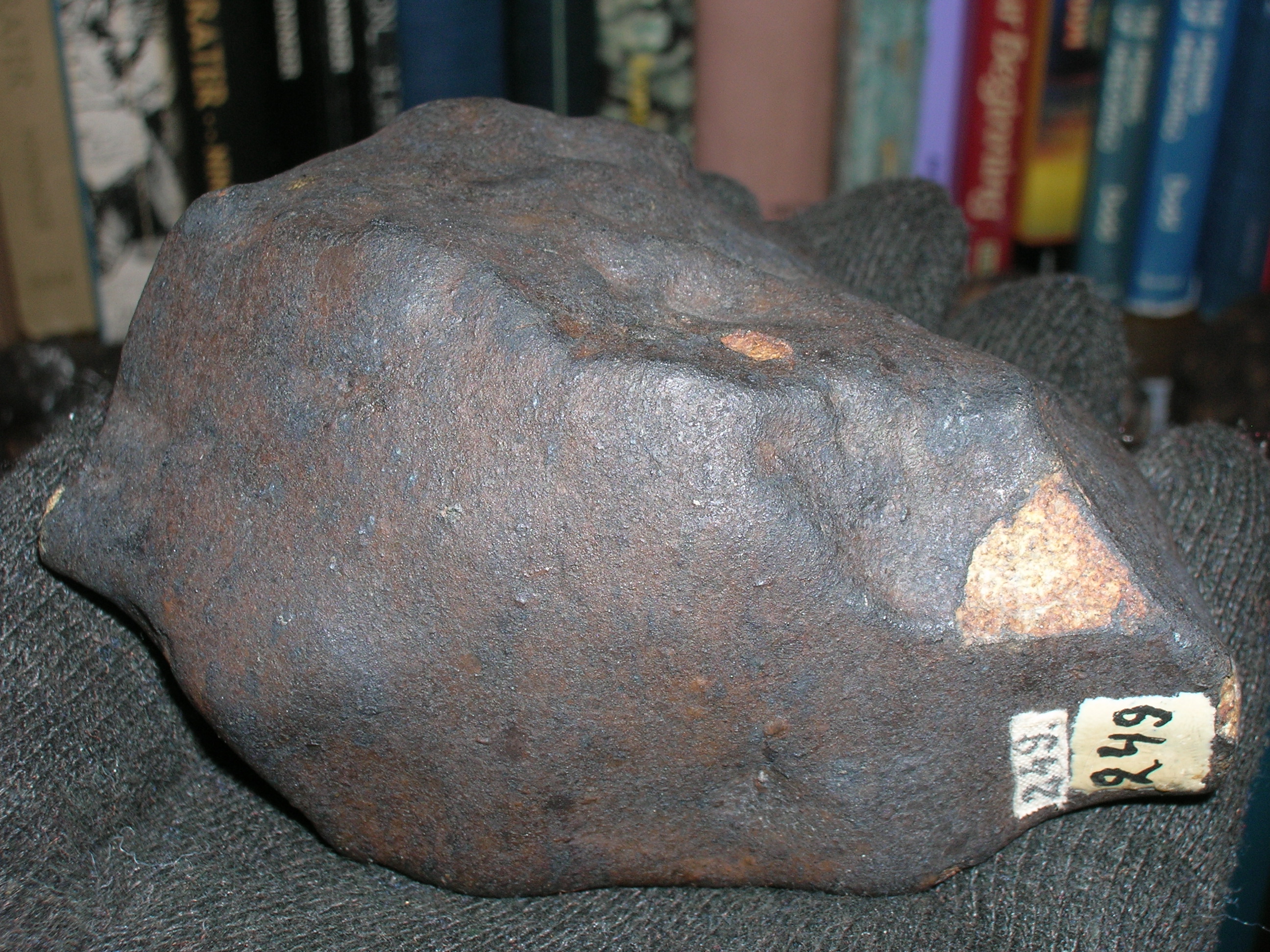Pervomaisky, L6
Pervomaisky fell on 26 December, 1933, in the USSR. A total of 97 stones weighing a total of approximately 49 kg were found.
From The Laboratory of Meteoritics/Vernadsky Institute:
“At 6 PM on December 26 of last year, a big fiery sphere like the Moon, flew like lightning across the sky from the southeast to the northwest above the whole of Ivanov Region. Then it spilled like a firework cascade of sparks beyond the Yuriev-Polsk region and then went out. These fireworks were accompanied by a loud thunder and constant noise. All windows rang, the huts shivered, and the population was in a panic…
Then in the middle of January based on tens of witnesses’ observations…I determined by a wide circle the point where the meteorite had stopped in the air. Calculations showed that I had bagged its location. I projected the fall to an Earth location in the northwestern part of the Yuriev-Polsk region. It only remained to find the meteorite itself.
Late April-May. The schoolchildren are mobilized from all around. Their badges flash in the fields: OSOAVIAKHIMA, OPTE, SVB – A First of May Labor Day for assistance to Soviet Science. Chains of students for many kilometers scrutinized the ground meter by meter….And here is a result of collective labor: tens of stony meteorites, the whole meteorite shower.
L.A. Kulik, 1934”
That would make this one of the earliest instances of the scientific triangulation and successful recovery of a meteorite — without the helping happenstance of a local finding a stone first. It’s pretty amazing that they could track a meteorite down without radar/video data and nothing but (often fairly unreliable) witness testimonials.
This 520 gram flight-marked individual bears the Russian Academy of Science #249. I wouldn’t call it oriented, but it has fine flow lines on most sides at a hint of froth around the edge of one face. Ex. Al Langheinrich.



